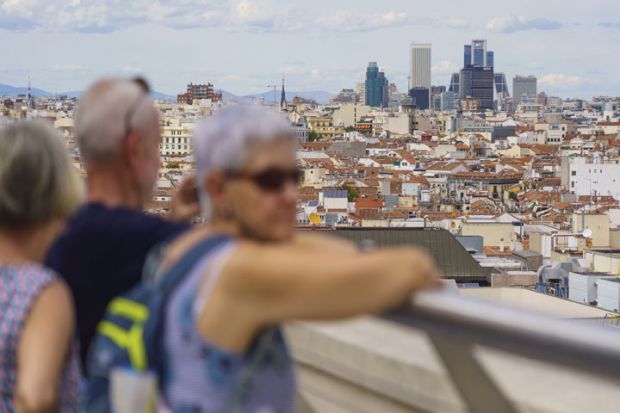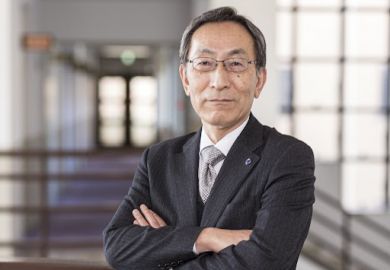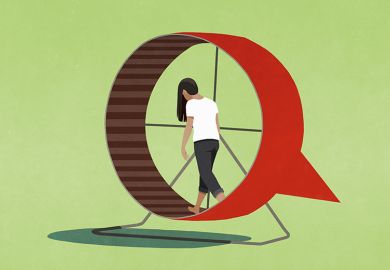Talk of university campuses conjures up, for many, images of ancient quads or sprawling concrete creations. What happens, then, when a university moves into a tower block?
This question is about to be answered by IE University, a private institution in Spain, which has embarked on the construction of a 35-storey high-rise on the northern side of Madrid.
Its experience could be of interest to higher education leaders around the world, as increasing urban concentration may make the vertical campus the university of the future.
In a “bustling metropolis, competing for space, it made sense to build upwards”, said Santiago Iñiguez, IE’s executive president.
IE’s tower – although it will not quite reach the 40-storey mark to be classed as a skyscraper – will house its undergraduate classes, as well as libraries, cafes, laboratories and an entrepreneurial hub. The base of the building will extend to include sports facilities and green spaces.
The 165m tall building, scheduled to open this autumn, will cover 45,000 square metres in total, equivalent to five football fields.
It could not be more different from IE’s Segovia campus, which is housed in the historic building of the old Santa Cruz la Real Convent, a national heritage site.
The tower, hosting 3,500 students, forms part of the university’s plans to expand its student numbers, Professor Iñiguez explained. But finding space in Madrid, the third largest city in Europe after Berlin and London, was a tricky task. “Towers occupy less space, so you see all major metropolises growing with these big tall buildings – they are forming part of the skyline,” Professor Iñiguez said. “This was a good opportunity and we jumped in.”
Professor Iñiguez said that it was likely universities in other tightly packed cities would follow suit and added that he was aware of similar “vertical” construction plans in the US and Tokyo.
IE’s tower is in the northern extension of the capital, alongside four other towers, that have formed a new business district called Madrid Nuevo Norte (New North). For Professor Iñiguez, the location and the links to nearby businesses and embassies were key, particularly for a university that focuses on executive education and global affairs.
“If we want universities to be close to different professions and the world of business, we need to embed them in the cities and make sure our students interact with the major stakeholders,” he said.
Professor Iñiguez argued that the tower will provide students with all the benefits of living in “a big, vibrant but also culturally rich city like Madrid”, while having the compact space that offered the social and educational benefits of campus-based universities.
This is not to say that the project is without its challenges. Inside the tower there will be open spaces that link three floors, so it doesn’t feel like “one floor on top of the other”, Professor Iñiguez said. Students and staff will be able to climb the stairs between these floors without having to take a lift. This sort of design was very important, so “it’s not simply an office building”, he said.
“We have taken the learning spaces and all the different galleries and corridors of traditional universities, that tend to be horizontal, and adapted them to the vertical form,” he said. These spaces will feel “really modern” and interactive to enhance the learning experience and “foster a rich collegiate life”, he said.
“We did a lot of research and consultation,” Professor Iñiguez continued. “We have had to run simulations to see how the flow of people will work at particular times, such as when classes change or people are most likely to be arriving or leaving the building, so the lifts don’t get overwhelmed, for example.”
The university will keep its existing buildings in downtown Madrid but reserve them for postgraduate teaching.
Professor Iñiguez claimed that students were “very excited” about the project, but also admitted that some academics “can be reluctant to modernise”.
“People can be hesitant to move from one place to the other, to change offices. We have a strong attachment to a physical space but if people are able to do so, we make them more adaptive to other changes and disruptions, in other areas of life,” he said.
“It is not that we are trying to make people become nomads…but our experience is that when you expose faculty members to new experiences, such as new technology for example, in the end those who are entrepreneurial and committed to education will embrace it. And we are an institution that embraces change.”





